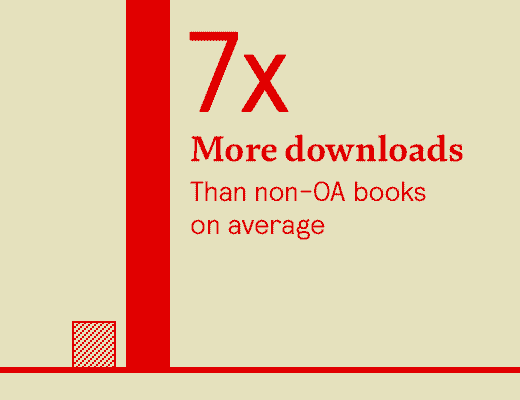Contribute a chapter to the Open Access book
‘Quantum Field Theory and Its Interface With Astro-Particle Physics and Gravitational Wave Astronomy’
ISBN: 978-0-85466-191-6
Join us and publish your work Open Access on intechopen.com with over 3.3 MILLION unique visitors per month
*Registration for this book closes on June 17th 2024
Quantum Field Theory and Its Interface With Astro-Particle Physics and Gravitational Wave Astronomy
ISBN: 978-0-85466-191-6
Co-editor:
Assistants to the editor:
About the book
Topics
The following topics illustrate the target subject areas and scope of the project. These keywords are not definitive but can be used as the basis for the chapter content. We accept theoretical and applied scientific papers which can be presented as original research papers and review papers. The required length of the full chapters is 10-20 pages.
Subject areas and keywords
Quantum Field Theory
Dark Matter
Neutrino Physics
Astrophysical Sources
Stochastic Background
Gravitational-Wave Backgrounds
Dark Energy
Dark Radiation
Astrophysics
Cosmological Sources
Interface Particle Physics
Gravitational-Wave
Peer Review Process
IntechOpen is dedicated to publishing exclusively peer-reviewed papers and books. All scientific works are subject to peer-review prior to publishing. IntechOpen is a member of the Committee on Publication Ethics (COPE), and all participating referees and Academic Editors are instructed to review submitted scientific works in line with the COPE Ethical Guidelines for Peer-Reviewers where applicable.


Publishing process
Book initiated and editor appointed
Date completed: 15 May 2024Chapter proposals submitted and reviewed
Deadline for chapter proposals: 17 June 2024 Register to participateApproved chapters written in full and submitted
Deadline for full chapters: 14 August 2024Full chapters peer reviewed
Review results due: 13 October 2024Book compiled, published and promoted
Expected publication date: 01 January 2025Why Open Access?

Chapter Processing Charge (CPC)
1400 GBP/chapter
No hidden costs. Flat rate Chapter Processing Charge for manuscripts up to 20 pages. Authors or their institutions/funding bodies will need to pay the CPC following acceptance after peer-review.
What do you get
Publishing Services
UK ISBN, DOI
Peer Review
Indexing in all major repositories like Web of Science, Google Scholar, DOAB
Free-to-read online access to your work
Creative Commons licences: you keep the rights to your work
Your dedicated Publishing Process Manager who will support you through the publishing process
Online First - Your chapter is published after review, even before the entire book is ready for publication, ensuring your research is made available to the scientific community without delay.
Publishing Services
UK ISBN, DOI
Peer Review
Indexing in all major repositories like Web of Science, Google Scholar, DOAB
Free-to-read online access to your work
Creative Commons licences: you keep the rights to your work
Your dedicated Publishing Process Manager who will support you through the publishing process
Online First - Your chapter is published after review, even before the entire book is ready for publication, ensuring your research is made available to the scientific community without delay.
Production services
English language proofreading
XML Typesetting and pagination - web (PDF, HTML) and print files preparation
IntechOpen collaborates with Straive and Enago. Authors who wish to use additional editorial or translation services prior to submitting their chapters are eligible for a discount.
Readership Reporting Of Your Chapter
Readership reports: data about downloads, citations, mentions
Email notification of each 500 downloads
Production services
English language proofreading
XML Typesetting and pagination - web (PDF, HTML) and print files preparation
IntechOpen collaborates with Enago, and Authors who wish to use translation services before submission are eligible for a 20% discount.
Readership Reporting Of Your Chapter
Readership reports: data about downloads, citations, mentions
Email notification of each 500 downloads
Promotion Of Your Chapter
Engagement with our scientific community
Outreach and promotion of your work through news and social media
Print And Distribution
Special discounts on hard copy orders
Publish on intechopen.com with
+3.3 MILLION unique visitors per month
Print And Distribution
Special discounts on hard copy orders
Promotion Of Your Chapter
Engagement with our scientific community
Outreach and promotion of your work through news and social media
Publish on intechopen.com with
+3.3 MILLION unique visitors per month
What makes us unique
 Platform
Platform
+185M
Total Downloads
1 Chapter Downloaded
Every
2 Seconds
Worldwide*
*Based on data collected from 2019-2020
 Scientists
Scientists
186,000
Authors And Editors
12.2 %
Come From World
Top 500 Universities
 Content
Content
6,900
Open Access Books Published
Citations
+184,650
+259,915
+115,661
50% More Citations
Than Non-OA Books
 Community
Community
+73,000
Monthly User Registrations
+7,140
Research Institutions
Collaborate with our community and contribute your knowledge.
FAQs
What is Open Access publishing process?
How does Open Access publishing process work? What does free-of-charge mean?
Where are IntechOpen’s books indexed?
What do you mean by fast book publishing?
Who are IntechOpen’s contributing editors and authors?
What are the scope and topics of IntechOpen’s books and chapters?
What is a difference between publishing an article in a journal and publishing a book chapter?
What are processing charges and how do they compare to traditional publishers or other Open Access publishers?
What are the benefits of publishing book chapters with IntechOpen?
Why am I receiving email invitations to write book chapters from you?
What is your history of working with authors?
I have no publishing funds, how can I cover the processing charges?
What if I still cannot get the funding?
I have no time now to write a book chapter, how can I contribute in the future?
Memberships And Partnerships
















